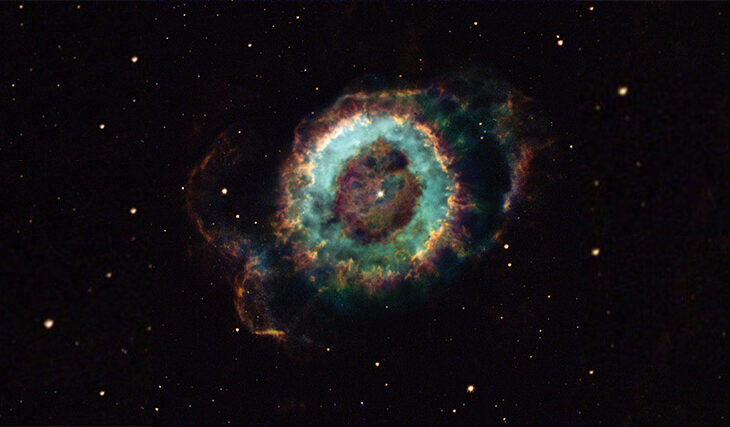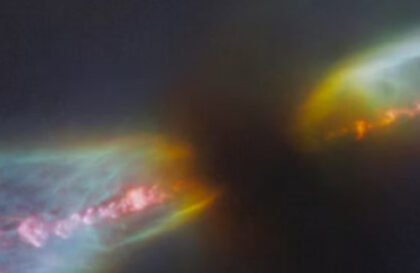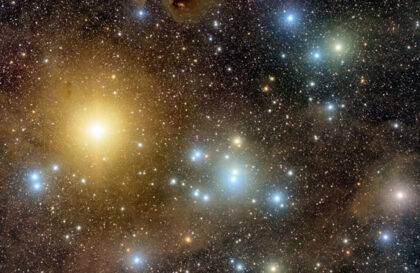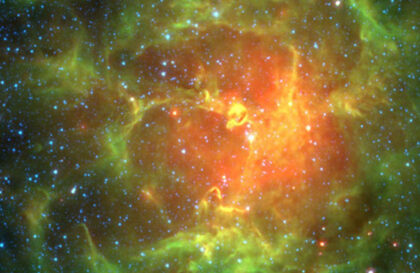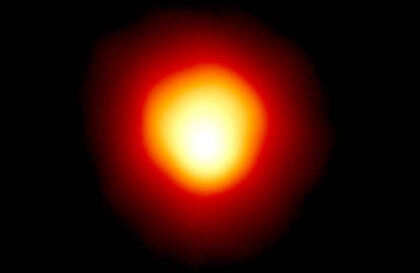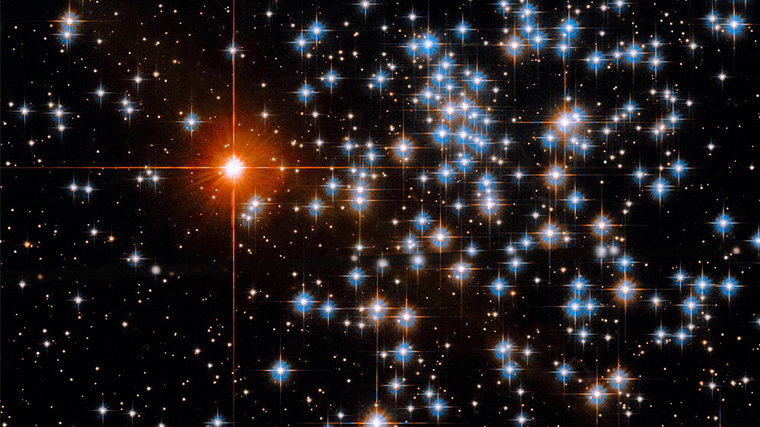The shock wave and material ejected during the death of a star create entire bubbles of gas in the interstellar medium, destroy nebulae, and even eject material from the galaxies themselves. Such destructive explosions… give life. They synthesize the entire periodic table.
Different stages of a star’s life cycle
Star formation begins in a cloud of gas and dust known as a nebula. As the nebula begins to collapse under its own gravity, it forms a protostar, a dense, hot core that will eventually become a star. The protostar continues to contract until it reaches a temperature and density at which nuclear fusion can occur, igniting the star and beginning the main sequence phase. At this stage, the star turns hydrogen into helium in its core, releasing energy and emitting light.
As a star ages, its core begins to run out of hydrogen fuel, causing it to expand and cool. This marks the beginning of the red giant phase when the star expands to many times its original size. During this phase, the star fuses helium into heavier elements such as carbon and oxygen. The outer layers of the star blow away, leaving behind a hot, dense core known as a white dwarf. The red giant phase is a crucial stage in a star’s life cycle because it determines its ultimate fate.
Invisibly buried in the centre of this colorful swirl of gas is a dying star, roughly the same mass as the Sun. Credit: NASA, ESA, and the Hubble Heritage Team (STScI/AURA). Acknowledgment: R. Sahai and J. Trauger (Jet Propulsion Laboratory)
The final stage of a star’s life cycle depends on its mass. Low-mass stars like the Sun will eventually use up all their fuel and collapse into a white dwarf. On the other hand, massive stars go supernova at the end of their lives. This explosion occurs when the star’s core collapses under its own gravity, causing a massive release of energy and ejection of the star’s outer layers. The remaining core can become a neutron star or a black hole, depending on its mass. Understanding the different stages of a star’s life cycle is critical to understanding the universe and the formation of planets and other celestial bodies.
Different ways stars can die
One of the most famous ways stars die is a supernova. A supernova is a bright explosion. During this stage, the star’s core collapses, causing a powerful explosion that can black out an entire galaxy. Supernovae can occur in various ways, including Type Ia, when a white dwarf star explodes after accreting too much mass, and Type II, when a massive star runs out of fuel and its core collapses. Supernovae play a crucial role in the universe because they create and distribute the heavy elements necessary for life.
Top: Image of galaxy M82 on December 10, 2013. Bottom: Image January 22, 2014. The position of supernova SN 2014J is marked. Credit: Wikipedia (public source).
Another way stars can die is by turning into a black hole. Black holes form when a massive star runs out of fuel, and its core collapses, creating a region of space where gravity is so strong that nothing, not even light, can escape. Black holes can continue to grow by absorbing matter from surrounding stars and gas clouds. Although black holes themselves do not die, they can eventually evaporate through a process known as Hawking radiation. This process occurs when particles and antiparticles are produced near the black hole’s event horizon, with one particle being absorbed by the black hole and the other being ejected into space, causing the black hole to lose mass and energy gradually.
The third way, by any means, you can die is to become a white dwarf. White dwarfs are excess grains of small and medium mass that have exhausted all their nuclear fuel. When the mirror runs out of fire, it will soon throw off its outer balls, leaving behind a small, thick core that forms coal and sourness. One teaspoon of white dwarf material would weigh up to 100 tons. Although the white dwarfs are not as massive as the black ones, they can still have a significant influx on the edges, as, for example, in the generation of new type Ia stars. Over billions of years, white dwarfs cooled down and collapsed, surrounded by stagnant, cold, dark objects known as black dwarfs.
Brown dwarfs, which are not true stars, are also the result of low-mass protostars that never reach the conditions necessary for nuclear fusion to begin.
The chemical composition of a star can also affect its death. The presence of heavier elements in the star, such as carbon and oxygen, can affect the fusion reactions that power the star. In particular, the amount of iron in a star’s core can determine whether or not it will go supernova. If the star’s core becomes too heavy with iron, it can no longer support its weight, leading to a catastrophic collapse and explosion.
Banner image: NGC 6369, a cosmic ghost. Credit: NASA and The Hubble Heritage Team (STScI/AURA)
Image credit:
https://www.esa.int
https://www.esa.int
https://ru.wikipedia.org
